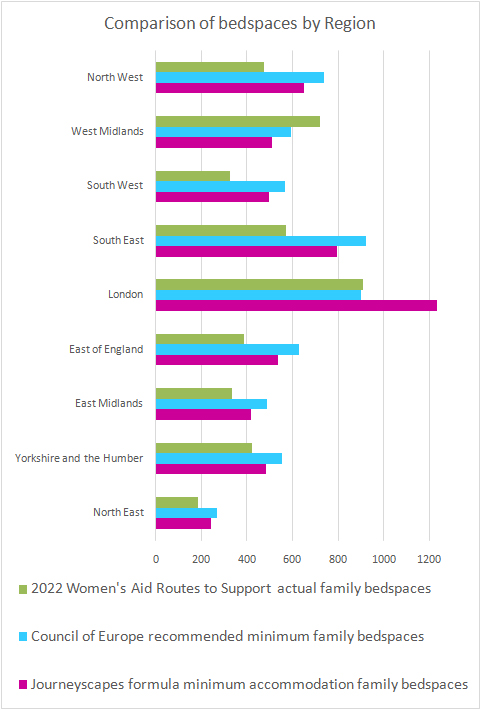It matters where domestic abuse services are – of course it does.
The location of domestic abuse services – whether women’s refuges or non-accommodation services – affects whether and how women can access the services and receive the support they need and deserve.
Whilst non-accommodation support can include workers travelling to where women and children are – sometimes called “floating support” with the idea that it floats to where it is needed, rather than expecting individuals to travel to the support – accommodation is in a specific location.
So, where should such services be?
As part of developing an ETHICAL response to service provision for domestic violence against women, Location is a key element to consider (alongside Eligibility, Type, Holistic, Independence, Capacity, and Accessibility). The location of services must enable both staying put and journeys – including return journeys where appropriate. Location is about women’s fundamental eligibility as a survivor of abuse – violence against women as a human rights violation – to go and be wherever is best.
Technical Paper on a formula for the Location of services in England
A technical paper on developing a formula for the Location of domestic abuse services in England has just been published and is available here. It should be read alongside the technical paper on Type and Capacity of domestic abuse services.
The main conclusion is that there should be sufficient accommodation and non-accommodation provision across the country in all types of places, and with no location exclusion criteria or rationing. Despite this formula being based on increasingly historical data of expressed demand, provision of accommodation bedspaces as recorded by Women’s Aid Routes to Support[1] is still below the required minimum level indicated by this formula (and by the Council of Europe recommendation[2]). Overall, the actual count of 4,332 family bedspaces in England in 2022 is below both the minimum from this formula (5,369) and the minimum recommended by the Council of Europe (5,656). And the shortage is more acute in some regions compared to others.

The graph shows that only the West Midlands region currently has higher provision than the minimum of the formula from this research, and that whilst provision in London meets the population-based Council of Europe recommendation, it does not meet the higher minimum calculated by this research by taking into account the distinctiveness of London in terms of length of stay in services.
The initial stage for a policy towards an ETHICAL service provision would be to fund the different types of service up to the minimum capacity. Thinking and planning regionally would be more functional than the current narrow focus on local authorities. After identifying the shortfall per region, actual provision should be in all types of places (all types of local authorities) – but strictly hosted by them and not in any way limited to women and children from that local authority. Planning and funding must be at the scale of women and children’s domestic violence help-seeking and journeys: scale meaning both providing sufficient capacity and provision at the appropriate geographical scale.
[1] Women’s Aid. 2022. Domestic Abuse Provision: Routes to Support. Bristol: Women’s Aid Federation of England. https://www.womensaid.org.uk/domestic-abuse-provision-data-routes-to-support/.
[2] Council of Europe. 2011. Explanatory Report to the Council of Europe Convention on Preventing and Combating Violence against Women and Domestic Violence. Strasbourg: Council of Europe. https://rm.coe.int/1680a48903.
